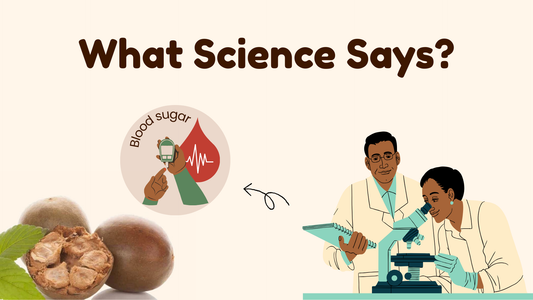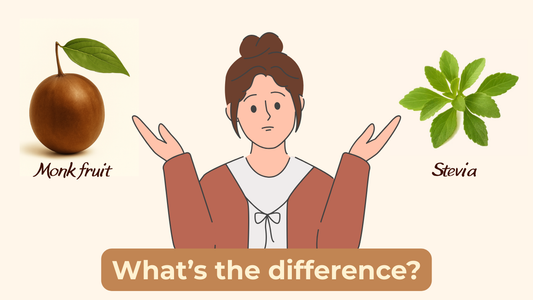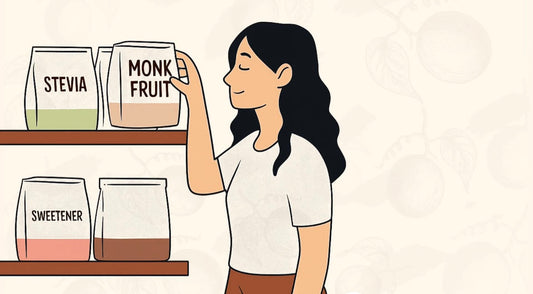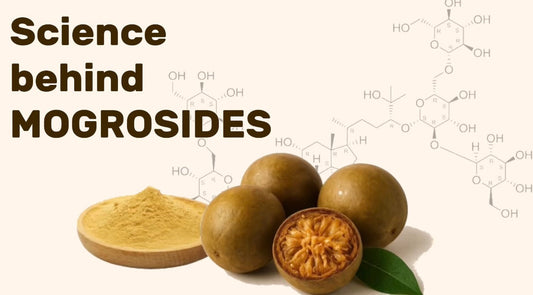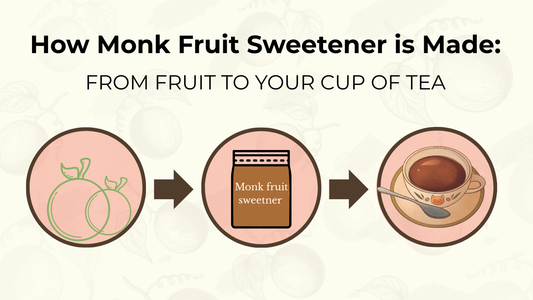Meet the Fruit That Changes Sweetness
For centuries, Asia has known a fruit that the West is only now waking up to. It’s small, round, green, and called Luo Han Guo in China - the world now calls it Monk Fruit.
Unlike sugar, monk fruit sweetness doesn’t come from glucose or fructose. It comes from natural compounds called mogrosides, which taste 100–200 times sweeter than sugar but carry zero calories and no glycemic impact.
Today, monk fruit is emerging as the cleanest, safest, and most natural sugar alternative - and EPRA Farms is bringing it to India.
Let’s break it down.
The Origins of Monk Fruit
• Monk fruit grows in the mountains of Southern China and Northern Thailand.
• It has been used in Traditional Chinese Medicine (TCM) for centuries.
• Buddhist monks cultivated it in the 13th century, which is how it got its name.
• Traditionally, monk fruit was used to make teas and tonics for cough, sore throat, and longevity.
This isn’t a modern invention - it’s an ancient fruit finally rediscovered for global health.
What Makes Monk Fruit Sweet?
The secret lies in mogrosides - antioxidant compounds unique to monk fruit.
• Mogrosides are not sugars (not glucose or fructose).
• The body does not metabolize them for energy.
• They pass through without raising blood sugar.
This is why monk fruit is:
• Zero calorie
• Zero glycemic index
• Safe for diabetics
• Safe for long-term use
|
Feature |
Regular Sugar |
Monk Fruit |
|
Calories |
16 per teaspoon |
0 per teaspoon |
|
Glycemic Index |
~65 |
0 |
|
Source |
Sugarcane/beet |
Monk fruit (natural fruit) |
|
Health impact |
Blood sugar spikes, weight gain, inflammation |
No spike, no calories |
|
Safety for diabetics |
❌ Not safe |
✅ Safe |
👉 Monk fruit doesn’t just replace sugar - it removes the risks.
Is Monk Fruit Natural?
Yes. Unlike artificial sweeteners (like aspartame, sucralose, saccharin), monk fruit is a plant-based sweetener.
• Extracted from the dried fruit using water.
• Concentrated mogrosides are isolated.
• No chemicals, no artificial processing.
At EPRA Farms, we keep it clean - blending monk fruit with erythritol (a safe sugar alcohol) to make it usable for baking, cooking, and daily use.
Safety and Research
• FDA (USA): Monk fruit is GRAS (Generally Recognized As Safe).
• EFSA (Europe): Approved for use in foods.
• Clinical studies show monk fruit is non-toxic, non-carcinogenic, and safe for children and adults.
Unlike artificial sweeteners, monk fruit has no side effects and is safe even with long-term use.
Monk Fruit in Everyday Life
• Sweeten tea and coffee
• Bake cakes, cookies, Indian sweets
• Mix in smoothies, yogurt, or cereals
• Use in sauces, marinades, desserts
Anywhere you’d use sugar, you can use monk fruit - but without the calories and spikes.
EPRA Farms: Bringing Monk Fruit to India
Until now, monk fruit was hard to find in India. At EPRA Farms, we’re changing that by:
• Partnering with global suppliers for authentic monk fruit extract.
• Creating a clean-label blend (Monk Fruit + Erythritol).
• Making it affordable and accessible to Indian families.
We believe monk fruit isn’t just another sweetener - it’s the future of sweetness in India.
Final Takeaway: What Is Monk Fruit?
• A small fruit from Asia, used for centuries in traditional medicine.
• Naturally sweet from mogrosides, not sugar molecules.
• Zero calories, zero glycemic impact, safe for diabetics.
• A clean, natural alternative to sugar - now available in India with EPRA Farms.
👉 Monk fruit isn’t just a sweetener. It’s a revolution in how we think about sweetness.


